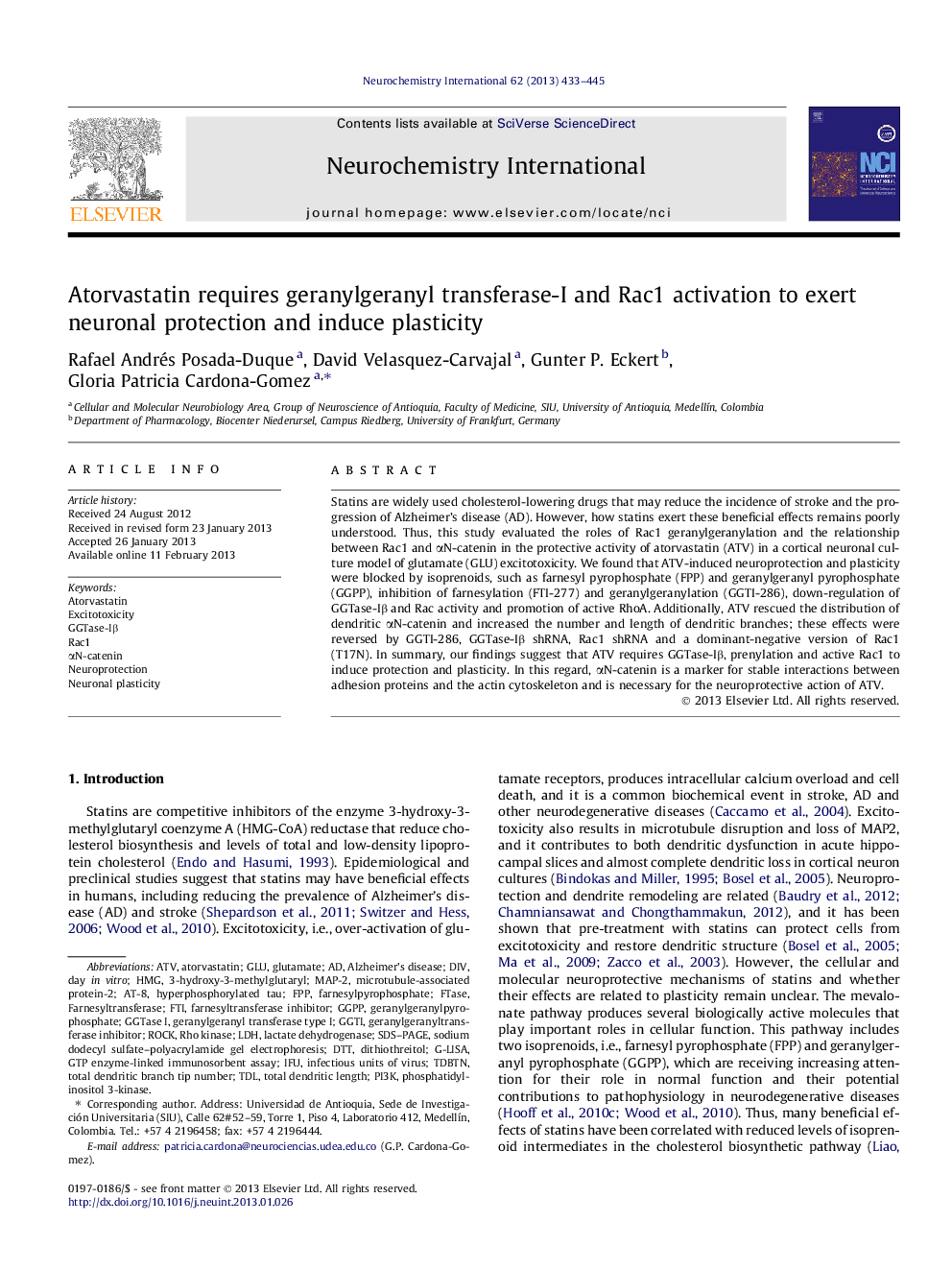| Article ID | Journal | Published Year | Pages | File Type |
|---|---|---|---|---|
| 2200686 | Neurochemistry International | 2013 | 13 Pages |
Statins are widely used cholesterol-lowering drugs that may reduce the incidence of stroke and the progression of Alzheimer’s disease (AD). However, how statins exert these beneficial effects remains poorly understood. Thus, this study evaluated the roles of Rac1 geranylgeranylation and the relationship between Rac1 and αN-catenin in the protective activity of atorvastatin (ATV) in a cortical neuronal culture model of glutamate (GLU) excitotoxicity. We found that ATV-induced neuroprotection and plasticity were blocked by isoprenoids, such as farnesyl pyrophosphate (FPP) and geranylgeranyl pyrophosphate (GGPP), inhibition of farnesylation (FTI-277) and geranylgeranylation (GGTI-286), down-regulation of GGTase-Iβ and Rac activity and promotion of active RhoA. Additionally, ATV rescued the distribution of dendritic αN-catenin and increased the number and length of dendritic branches; these effects were reversed by GGTI-286, GGTase-Iβ shRNA, Rac1 shRNA and a dominant-negative version of Rac1 (T17N). In summary, our findings suggest that ATV requires GGTase-Iβ, prenylation and active Rac1 to induce protection and plasticity. In this regard, αN-catenin is a marker for stable interactions between adhesion proteins and the actin cytoskeleton and is necessary for the neuroprotective action of ATV.
► ATV requires active GGTase-Iβ to induce protection and neuronal plasticity. ► ATV requires active Rac1 to generate protection and neuronal plasticity. ► Neuroprotection and plasticity induced by active Rac1 is geranylgeranylation-dependent. ► ATV-induced dendritic αN-catenin distribution requires active Rac. ► Dendritic αN-catenin distribution is an indicator of neuroprotection by ATV.
